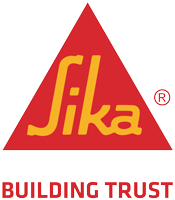Frequently Asked Questions about MaxFlash
What is MAXFLASH?
MAXFLASH is a high performance liquid flashing membrane based on silyl terminated polyether (STPE) chemistry. It can be used to flash rough openings on all common types of code-approved construction.
In addition to flashing rough openings, MAXFLASH can be used to seal joints in all commonly used sheathing, including ASTM C1177 gypsum sheathing, wood-based sheathing and cement board.
Where can MAXFLASH be used?
MAXFLASH is an approved component of Senergy EIFS, stucco and air/water-resistive barrier systems.
MAXFLASH can be used to form an air/water-resistive barrier system when used with air/water-resistive barrier sheathing such as Georgia Pacific DensElement.
In addition, MAXFLASH can also be used to flash rough openings in restoration and residential construction.
What is the significance of STPE chemistry?
Many STPE liquid flashing products are made by third-party vendors and sold under private label brands.
MAXFLASH is a unique product developed by Master Builders Solutions R&D and manufactured at the Master Builders Solutions production facility in Brighton Colorado. It was designed to provide best-in-class application properties and outstanding performance properties. MAXFLASH is easy to gun, provides exceptional ability to hang on to upside down window heads, is easy to spread, and cures quickly. It also provides best-in-class adhesion to damp substrates and ability to withstand immediate rainfall.
How thick should applicators apply MAXFLASH?
MAXFLASH is applied at a typical 20-mil thickness. On rough openings, it must be applied at a 12 – 30 mil thickness. On sheathing joints, it must be applied at a 20 – 30 mil thickness.
Maximum 30-mils thickness is based on ASTM E84 fire testing (Class A performance) and ASTM E96 testing that yielded 7.3 perms at 30-mils. MAXFLASH is vapor permeable at the highest recommended thickness.
Minimum 20-mils on sheathing is based on ICC-ES AC212 testing.
Minimum 12-mils on rough openings is based on AAMA 714 testing. ASTM E96 vapor permeability at 12-mils is 20-perms.
All of your details and videos show MAXFLASH applied in a zigzag pattern before spreading? Why is this?
It is the applicator's responsibility to create a continuous, void- and pinhole-free membrane at a typical 20-mil thickness. A zigzag pattern is not the only way to do this. However, we have found that using a zigzag pattern makes it easier to spread MAXFLASH to a uniform 20-mil thickness.
The details and videos show applicators placing a bead of MAXFLASH onto window corners and gaps between sheathing and framing, wood bucks and framing, and between wood bucks before applying the zigzag pattern on sheathing. Why is this?
The applicator is responsible for creating a void- and pinhole-free waterproof membrane everywhere that rough openings need to be flashed. Gaps are a key area that benefit from direct application of MAXFLASH. Applying a bead of MAXFLASH in these key areas helps applicators reliably deliver what is expected of them, quickly and efficiently.
What are the best places to use MAXFLASH?
Complex rough openings featuring protruding or recessed bucks are not easily flashed with SHEATHING FABRIC reinforced fluid applied air barriers. They can be quickly and easily flashed with MAXFLASH.
Tightly butted sheathing joints are quickly and easily prepared using MAXFLASH.
Climates that feature frequent rainfall are particularly suitable for MAXFLASH.
Are there any circumstances where SHEATHING FABRIC or WS FLASH are better choices than MAXFLASH?
Yes. While many gaps up to ½-inch wide can be filled with MAXFLASH, this can be expensive. Outside sheathing corners often have large gaps and rough edges that consume large amounts of MAXFLASH. Many contractors will find that they can lever the best properties of both MAXFLASH and traditional SHEATHING FABRIC reinforced fluid applied air barriers to create high-performance buildings cost-effectively.
Gaps that are too wide for MAXFLASH (punched openings in window jambs, for example) can be remediated with WS FLASH before application of MAXFLASH.
Why does the MAXFLASH Product Bulletin have such wide ranges for Coverage?
On sheathing joints, the width of the sheathing gap is variable, and strongly affects coverage. Gaps in rough openings also affect coverage.
What factors affect the rate of cure for MAXFLASH?
MAXFLASH is cured by moisture present in air and in the substrate that it is applied to. It will cure more quickly in humid conditions, and when applied to damp substrates. It will also cure faster in warmer temperatures.
Is it possible to accelerate the cure of MAXFLASH in very dry places, like the desert?
Yes. Misting MAXFLASH with a fine spray of water will accelerate curing.
What happens when MAXFLASH is applied at temperatures below 32°F?
Since MAXFLASH requires moisture to cure, it will not cure until the temperature rises above freezing. Since it is 100% solids, it will not dry out, but will remain in liquid form until it cures.

